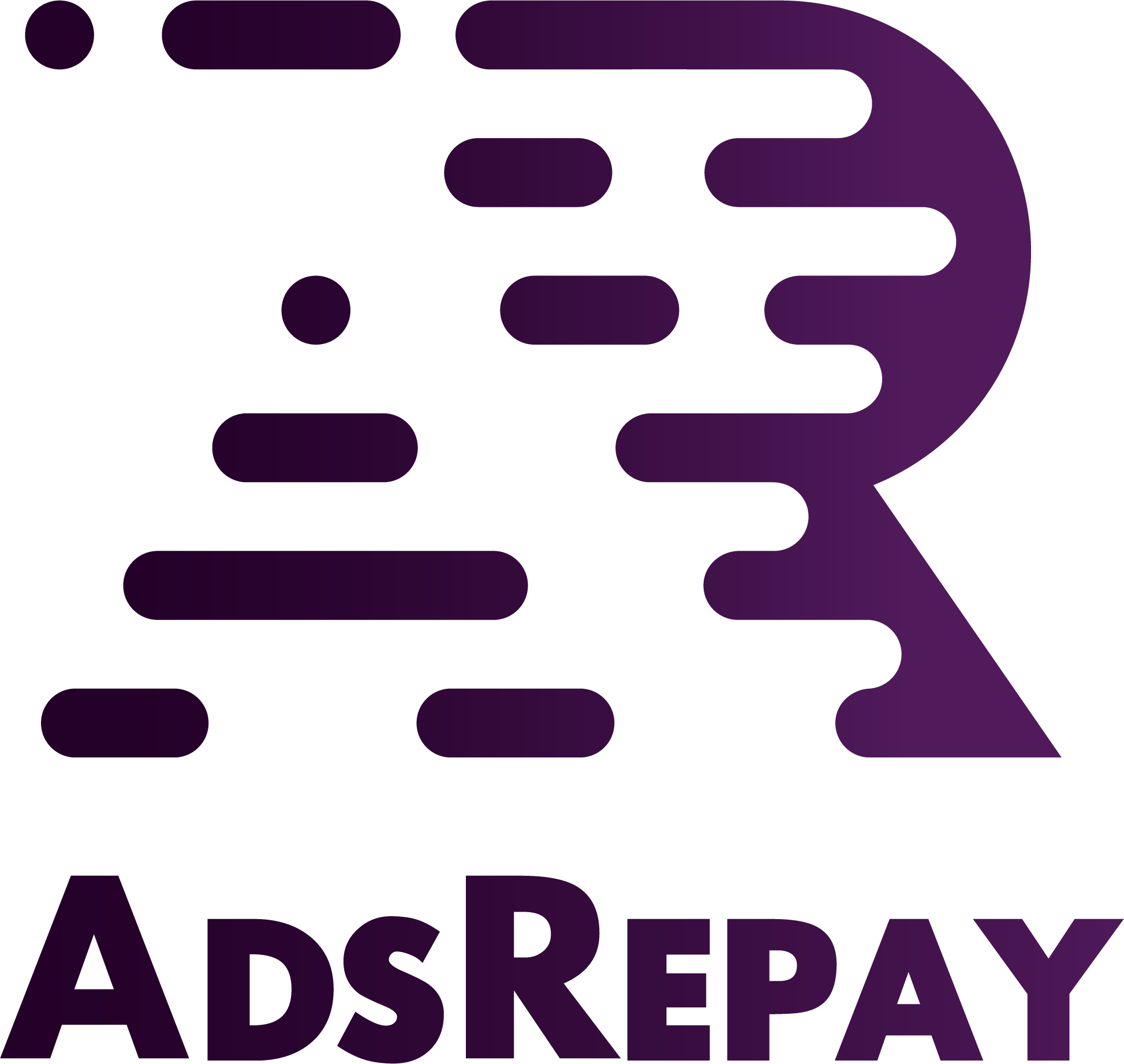
Introduction:
As a college student, I ventured into the world of blogging and quickly discovered its potential to generate a side income. My blog, which focused on topics related to MBA, CAT exams, and resume building, became quite successful and allowed me to support myself financially during my college years. This experience not only honed my skills but also provided me with valuable insights into the freelancing world.
The Relevance of Freelancing for College Students
Freelancing is an excellent opportunity for college students for several reasons. It offers flexibility, allowing students to balance their academic responsibilities with work. It provides a source of income, which can help pay for tuition, books, and other expenses. Additionally, freelancing helps students gain practical experience, build a portfolio, and develop skills that are highly valued in the job market.
Overview of the Blog’s Purpose
This blog aims to guide college students through five easy steps to start their freelancing journey and earn a substantial side income of ₹20,000-25,000 per month. By sharing my own experiences and providing practical tips, I hope to help you identify your niche, choose the right freelancing services, set up a professional base, build a compelling portfolio, and effectively find clients. Whether you’re new to freelancing or looking to refine your approach, these steps will set you on the path to success.
Step 1: Finding Your Niche
Definition and Importance of a Niche
A niche refers to a specific area of interest or expertise within a broader industry or field. It is a focused segment where individuals can specialize and excel, catering to a particular audience’s needs or preferences. Identifying and establishing a niche is crucial for success in freelancing as it allows you to differentiate yourself from competitors, build authority, and attract clients who value your specialized skills and knowledge.
Personal Anecdote: The Author’s Niche in MBA, CAT Exam, and Resume Building
During my college years, I discovered my niche in areas related to MBA preparation, CAT exams, and resume building. These topics resonated with me as I had a keen interest in business and career development. Leveraging my expertise and experiences in these fields, I created content on my blog that addressed common challenges faced by students and professionals aspiring to pursue an MBA or advance their careers.
Introduction to the Ikigai Model for Finding a Niche
The Ikigai model, originating from Japan, provides a holistic framework for discovering one’s niche by intersecting four key elements:
1. What You Love: Identify activities or subjects that ignite your passion and bring you joy. Your niche should align with your interests and values, allowing you to derive satisfaction from your work.
2. What You Are Good At: Assess your skills, strengths, and areas of expertise. Your niche should capitalize on your strengths, enabling you to deliver high-quality results and stand out in your chosen field.
3. What the World Needs: Consider the demands and challenges present in society or specific industries. Your niche should address these needs and provide solutions or value-added services that meet market demands.
4. What You Can Be Paid For: Evaluate the monetization potential of your niche. Determine if there is a viable market willing to pay for the products or services you offer. Your niche should offer opportunities for financial sustainability and growth.
Practical Tips on Identifying Your Niche
1. Self-Assessment: Reflect on your interests, passions, skills, and experiences. Identify topics or areas where you have a genuine interest and expertise.
2. Market Research: Conduct thorough research to understand market trends, demands, and competition within your potential niches. Analyze gaps or underserved areas where you can carve out your niche.
3. Feedback and Validation: Seek feedback from peers, mentors, or potential clients to validate your niche ideas. Pay attention to their insights and suggestions to refine your niche selection process.
4. Experimentation: Be open to exploring different niches and testing various ideas. Experiment with different content formats, services, or products to gauge audience interest and engagement.
By following these practical tips and leveraging the Ikigai model, you can confidently identify a niche that aligns with your passions, skills, market needs, and financial goals, laying a strong foundation for your freelancing journey.
Step 2: Exploring Freelancing Methods
Understanding the Various Ways to Monetize Your Niche
Once you’ve identified your niche, it’s essential to explore the diverse opportunities available for monetization within that niche. Monetization strategies can vary depending on factors such as audience demographics, industry trends, and your own skills and preferences. Here are some common ways to monetize your niche:
1. Content Creation: Produce high-quality content in the form of articles, blogs, videos, or social media posts that cater to your niche audience. Monetization avenues include sponsored content, affiliate marketing, and advertising revenue.
2. Teaching and Coaching: Sharing your expertise through online courses, workshops, tutoring sessions, or coaching programs. You can charge for access to your educational content or offer personalized coaching services.
3. Consulting and Freelancing Services: Providing consultancy services, freelance work, or project-based services related to your niche. This can include offering strategic advice, conducting market research, or delivering specialized services tailored to clients’ needs.
4. Product Development: Creating and selling digital or physical products relevant to your niche, such as e-books, templates, software tools, or merchandise. Product sales can generate passive income and expand your revenue streams.
5. Affiliate Marketing: Promoting products or services related to your niche and earning a commission for each sale or referral generated through your affiliate links. This can be integrated into your content or marketing efforts.
Examples of Freelancing Opportunities in Different Niches
Freelancing opportunities abound across various niches, allowing individuals to leverage their expertise and skills to generate income. Here are some examples of freelancing opportunities in different niches:
1. Content Creation: Writing articles, blog posts, social media content, or creating multimedia content (videos, podcasts, infographics) for businesses, publications, or digital platforms.
2. Graphic Design: Designing logos, branding materials, marketing collateral, website graphics, or illustrations for clients in industries such as advertising, publishing, or e-commerce.
3. Web Development: Building and designing websites, web applications, or e-commerce platforms for businesses, startups, or entrepreneurs seeking an online presence.
4. Digital Marketing: Providing services such as social media management, search engine optimization (SEO), email marketing, or pay-per-click (PPC) advertising to help businesses enhance their online visibility and reach.
5. Consulting and Coaching: Offering expertise in areas such as business strategy, marketing, career development, personal finance, or health and wellness through one-on-one consultations or group coaching sessions.
Personal Anecdote: Different Ways the Author Monetized Their MBA Knowledge
Drawing from my experience in the MBA niche, I explored various avenues to monetize my knowledge and expertise:
Content Creation: I authored blog posts, articles, and e-books on MBA preparation tips, career advice, and industry insights. Through affiliate marketing and sponsored content partnerships, I monetized my blog traffic and audience engagement.
Teaching and Coaching: I conducted online workshops and coaching sessions for MBA aspirants, providing personalized guidance on exam preparation, interview techniques, and resume building. These coaching services allowed me to leverage my expertise while generating income.
Consulting Services: Leveraging my MBA background, I offered consultancy services to startups and small businesses seeking strategic advice on market entry, business development, and growth strategies. This consulting work provided additional income streams and opportunities for professional growth.
By diversifying my monetization strategies and exploring freelancing opportunities within my niche, I was able to maximize my earnings potential and establish a sustainable income stream from my MBA knowledge and expertise.
Step 3: Determining Freelancing Services Using the 3C Model
Explanation of the 3C Model
The 3C Model provides a structured approach to determine the freelancing services that best suit your skills, preferences, and financial goals. It consists of three key factors:
1. Competencies:
Competencies refer to the skills and expertise you already possess or can easily acquire. These are the capabilities that enable you to deliver high-quality work and add value to your clients. Assessing your competencies helps you identify the freelancing services where you excel and can differentiate yourself from competitors.
2. Comfort:
Comfort represents the alignment between the freelancing work and your lifestyle, preferences, and work habits. It encompasses factors such as the type of work environment, schedule flexibility, communication preferences, and personal boundaries. Choosing freelancing services that align with your comfort level enhances job satisfaction and productivity.
3. Cash:
Cash pertains to the earning potential of the freelancing services you offer. It involves evaluating the market demand, pricing dynamics, and revenue opportunities associated with each service. Understanding the cash aspect helps you prioritize services that offer lucrative income streams and financial stability.
Personal Examples: The Author’s Journey in Choosing Writing Services
In my freelancing journey, I utilized the 3C Model to determine that writing services aligned with my skills, preferences, and financial goals:
Competencies:
Drawing from my experience in content creation and writing, I identified writing as a core competency. I possessed strong writing skills, research abilities, and the capacity to communicate complex ideas effectively. Leveraging these competencies, I offered writing services across various platforms and niches.
Comfort:
As a college student with limited time and a preference for remote work, writing offered the flexibility and autonomy I desired. It allowed me to work from anywhere, manage my schedule efficiently, and maintain a healthy work-life balance. Writing also aligned with my introverted nature, as it required minimal face-to-face interaction.
Cash:
While writing may not offer the highest earning potential compared to other freelancing services, it provides a stable income stream and growth opportunities. I could command competitive rates for my writing services, especially in specialized niches like MBA preparation and career development. Additionally, writing allowed me to scale my income by diversifying into multiple income streams such as sponsored content, affiliate marketing, and consulting services.
Practical Exercise: How to Evaluate Your Skills, Comfort Level, and Earning Potential
To evaluate your skills, comfort level, and earning potential in freelancing services, follow these practical steps:
1. Skills Assessment:
Identify your strengths, expertise, and areas of proficiency. Consider your educational background, work experience, certifications, and hobbies. Make a list of skills that are in demand in your target freelancing niche.
2. Comfort Evaluation:
Reflect on your lifestyle preferences, work habits, and personal boundaries. Determine the type of work environment, communication style, and schedule flexibility that best suits your needs. Consider factors such as remote work, client interactions, and workload management.
3. Earning Potential Analysis:
Research the market demand, competition, and pricing dynamics in your chosen freelancing niche. Assess the income potential of different services based on factors such as demand-supply dynamics, client budgets, and industry trends. Explore opportunities to scale your income through value-added services, upselling, or diversification.
By conducting a thorough evaluation based on the 3C Model, you can identify freelancing services that leverage your strengths, align with your preferences, and offer lucrative income opportunities, setting the stage for a successful freelancing career.
Step 4: Setting Up Your Base
Importance of Having a Professional Base or Platform
Establishing a professional base or platform is crucial for freelancers as it serves as their digital storefront, showcasing their skills, services, and portfolio to potential clients. A well-designed and functional base instills trust, credibility, and professionalism, enhancing your brand image and attracting quality clients. It provides a centralized hub where clients can learn about your offerings, contact you, and engage with your work, ultimately leading to business growth and success.
Example Bases for Different Freelancing Types
1. Website for Writers: Writers can create a personal website or blog to showcase their writing portfolio, expertise, and services. They can publish sample articles, client testimonials, and blog posts to demonstrate their writing style and capabilities. Platforms like WordPress or Squarespace offer customizable templates and plugins tailored to writers’ needs.
2. Portfolio for Designers: Designers can build an online portfolio showcasing their design projects, artwork, and creative skills. They can include high-quality images, project descriptions, and client testimonials to highlight their design aesthetics and expertise. Portfolio platforms like Behance, Dribbble, or Adobe Portfolio offer user-friendly templates for designers to showcase their work professionally.
3. YouTube Channel for Video Creators: Video creators can leverage YouTube as their base to showcase their video content, tutorials, and creative projects. They can optimize their channel with engaging thumbnails, compelling video titles, and descriptive video descriptions to attract subscribers and viewers. YouTube provides monetization options such as ad revenue, sponsorships, and merchandise sales for video creators.
Detailed Steps on Setting Up a Blog Using Hostinger
Here’s a step-by-step guide to setting up a blog using Hostinger, a reliable web hosting platform:
1. Choosing a Web Hosting Plan:
Visit Hostinger’s website and select a suitable web hosting plan based on your requirements and budget. Consider factors such as disk space, bandwidth, and features like website builder, SSL certificate, and customer support. Choose a plan that offers scalability and performance for your blog.
2. Using Hostinger’s AI Website Builder:
Once you’ve chosen a hosting plan, proceed to set up your website using Hostinger’s AI Website Builder. This intuitive tool simplifies the website creation process, allowing you to choose a template, customize layout and design elements, and add content without any coding knowledge. Follow the prompts to create your website within minutes.
3. Creating and Customizing Your Website:
Customize your website by adding relevant pages, such as Home, About, Services, Portfolio, and Contact. Customize the layout, colors, fonts, and imagery to align with your brand identity and style. Upload high-quality images, write compelling copy, and integrate essential features like contact forms, social media links, and blog sections.
Tips for Setting Up a Professional and Attractive Base for Your Freelancing Services
Choose a clean and modern design that reflects your brand identity and professionalism.
Use high-quality images and graphics to enhance visual appeal and engage visitors.
Optimize your website for mobile responsiveness to ensure a seamless user experience across devices.
Include clear navigation menus and call-to-action buttons to guide visitors and encourage interactions.
Showcase your portfolio, testimonials, and client work prominently to demonstrate your expertise and credibility.
Optimize your website for search engines (SEO) to improve visibility and attract organic traffic.
Regularly update and maintain your website with fresh content, blog posts, and portfolio updates to keep visitors engaged and informed.
By following these tips and guidelines, you can create a professional and attractive base for your freelancing services, effectively showcasing your skills, expertise, and portfolio to attract clients and grow your business.
Step 5: Building Your Portfolio
Definition and Importance of a Portfolio
A portfolio is a collection of your work samples, projects, and achievements that showcase your skills, expertise, and accomplishments to potential clients or employers. It serves as tangible evidence of your capabilities and credibility, allowing clients to assess your suitability for their projects or assignments. A well-curated portfolio not only demonstrates your proficiency in your field but also sets you apart from competitors, instilling trust and confidence in your abilities.
How to Showcase Your Work Effectively
1. Examples of Portfolios for Different Freelancing Services:
Writing Services: A writing portfolio may include samples of articles, blog posts, case studies, or whitepapers that demonstrate your writing style, research abilities, and subject matter expertise.
Design Services: A design portfolio can showcase visual projects such as logos, branding materials, website designs, illustrations, or multimedia presentations, highlighting your creativity and design skills.
Web Development Services: A web development portfolio may feature websites, web applications, or e-commerce platforms you’ve built, along with descriptions of your role, technologies used, and client feedback.
Consulting or Coaching Services: A consulting or coaching portfolio might include client testimonials, success stories, project summaries, or certifications that validate your expertise and results.
2. Personal Anecdote: How the Author Used Their Blog as a Portfolio:
In my freelancing journey, I leveraged my blog as a portfolio to showcase my writing skills, expertise, and industry knowledge. I regularly published blog posts on topics related to my niche, such as MBA preparation, career advice, and personal development. Each blog post served as a sample of my writing style, research capabilities, and subject matter expertise, allowing potential clients to evaluate my skills and credibility. By consistently updating and maintaining my blog with high-quality content, I effectively positioned myself as an authority in my field and attracted clients seeking writing services.
Practical Steps to Build a Portfolio
1. Writing Sample Blog Posts:
Choose topics relevant to your niche or target freelancing services.
Research and gather information to support your writing.
Use tools like ChatGPT or Hostinger’s AI writer for initial drafts or brainstorming ideas.
2. Using Tools Like ChatGPT and hostinger’s AI Writer for Initial Drafts:
Utilize AI-powered tools like ChatGPT or Hostinger’s AI Writer to generate initial drafts, outline ideas, or generate content prompts.
These tools can assist in overcoming writer’s block, exploring new angles, or refining your writing style.
3. Publishing and Showcasing Your Work:
Publish your blog posts on your website, blog, or portfolio platform.
Organize your work samples by category, type, or relevance to make it easy for visitors to navigate.
Include brief descriptions or annotations to provide context and highlight key points.
Share your portfolio links with potential clients, employers, or collaborators to showcase your skills and capabilities effectively.
By following these practical steps and leveraging your portfolio effectively, you can showcase your expertise, attract clients, and establish a strong reputation in your freelancing niche. Regularly update and maintain your portfolio with new projects and achievements to keep it relevant and compelling to your audience.
Step 6: Finding Your Clients
Strategies for Finding and Securing Clients
Finding and securing clients is a crucial aspect of freelancing success. Here are some effective strategies:
1. Networking and Referrals: Build and nurture professional relationships through networking events, industry conferences, and online communities. Leverage referrals from satisfied clients, colleagues, and mentors to expand your client base.
2. Online Presence: Establish a strong online presence through your website, blog, social media profiles, and professional platforms like LinkedIn. Showcase your expertise, share valuable content, and engage with potential clients to attract their attention.
3. Targeted Outreach: Identify your ideal clients and tailor your outreach efforts to their needs and preferences. Personalize your pitches, proposals, and communications to demonstrate your understanding of their challenges and offer solutions.
4. Content Marketing: Create and share valuable content related to your freelancing niche to attract inbound leads and establish credibility. Write blog posts, create videos, or host webinars that showcase your expertise and provide value to your target audience.
Importance of Networking and Referrals
Networking and referrals play a vital role in freelancing success:
Networking helps you build relationships with potential clients, collaborators, and industry influencers, leading to valuable opportunities and referrals.
Referrals from satisfied clients or colleagues serve as endorsements of your skills and reliability, instilling trust and confidence in prospective clients.
Practical Tips
1. Reaching Out to Potential Clients Through Social Media and LinkedIn:
Actively engage with potential clients on social media platforms like Twitter, Instagram, and LinkedIn.
Share relevant content, participate in industry discussions, and connect with decision-makers in your target companies.
Use LinkedIn to research prospects, send personalized connection requests, and initiate conversations about potential collaborations or projects.
2. Offering Free Samples to Attract Initial Clients:
Offer free samples or trial services to showcase your skills and build trust with potential clients.
Provide valuable insights, advice, or mini-projects that demonstrate your capabilities and commitment to delivering results.
Use free samples as a way to establish rapport and secure long-term client relationships.
3. Leveraging Freelancing Platforms Like Upwork:
Join freelancing platforms like Upwork, Freelancer, or Fiverr to access a pool of potential clients and project opportunities.
Create a compelling profile that highlights your skills, experience, and past successes.
Bid on relevant projects, submit proposals and communicate effectively with clients to win projects and build your reputation.
Personal Anecdote: The Author’s Experience with Networking and Referrals
In my freelancing journey, networking and referrals have played a pivotal role in finding and securing clients:
I actively participated in industry events, attended networking meetups, and engaged with professionals in my niche.
Through networking, I built meaningful relationships with fellow freelancers, industry experts, and potential clients.
Referrals from satisfied clients and colleagues have consistently provided me with valuable opportunities and introductions to new clients.
By prioritizing relationship-building and delivering exceptional work, I’ve cultivated a strong network of clients and collaborators who continue to refer me to others.
By implementing these practical tips and leveraging the power of networking, referrals, and online platforms, you can effectively find and secure clients for your freelancing business, paving the way for long-term success and growth.
Conclusion:
Starting your freelancing journey is like stepping into a world of endless possibilities. It’s a chance to do what you love, take charge of your career, and pave your own path to success. Remember:
Your skills are valuable, and there’s a demand for what you can offer.
Embrace challenges as opportunities for growth, and stay determined even when things get tough.
Keep exploring, learning, and adapting to the ever-changing freelancing landscape.
The Long-Term Benefits? Oh, They’re Worth It:
Freelancing isn’t just about making a quick buck—it’s about building a sustainable career and securing your financial future. With freelancing, you can:
Create multiple income streams and turn your side hustle into a thriving business.
Grow your skills, expand your network, and open doors to new opportunities.
Enjoy the freedom to work on your own terms, pursue your passions, and live life on your own terms.
Ready to Dive In? Here’s Your Action Plan:
1. Find Your Niche: Take some time to reflect on what you love and what you’re good at.
2. Explore Your Options: Research different freelancing methods and see what resonates with you.
3. Set Up Your Base: Get your website, portfolio, or channel up and running to showcase your talents.
4. Build Your Portfolio: Gather your best work samples and create a portfolio that wows potential clients.
5. Start Networking: Reach out to potential clients, colleagues, and mentors to explore freelancing opportunities.
Remember, the journey of a thousand miles begins with a single step. So why wait? Take that first step today and embark on an exciting freelancing adventure!
Video Credit:
- Youtuber Name: Shweta Arora
- Channel’s Name: [Shweta Arora]
- Video Title: [Earn 25k/Month as a College Student ➤ How to Earn from Freelancing? 💰]
- Publishing Date: [June 4, 2024]
- Link to Video: Watch Here
- Link to Channel: Shweta Arora




